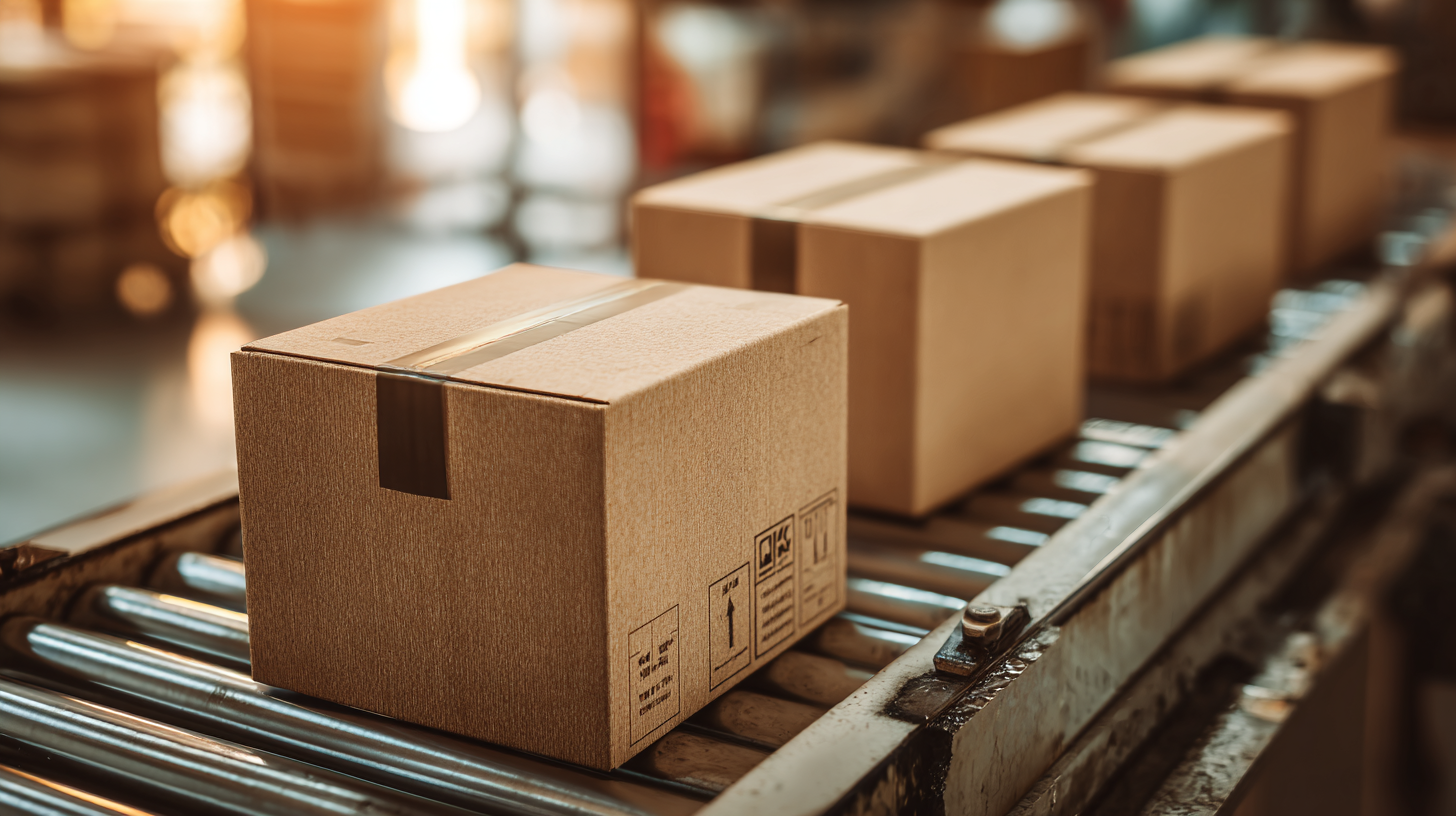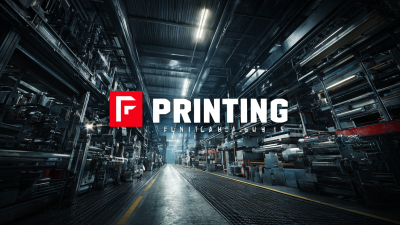Revolutionizing E-commerce: How Sustainable Packaging Can Cut Your Carbon Footprint by 30%
In the rapidly evolving landscape of e-commerce, businesses are increasingly recognizing the critical importance of Sustainable Packaging as a vital strategy for reducing their carbon footprint. With growing consumer awareness regarding environmental issues, implementing eco-friendly packaging solutions not only meets regulatory requirements but also enhances brand loyalty and drives sales. Recent studies suggest that by adopting sustainable practices, companies can achieve a remarkable reduction of up to 30% in their overall carbon emissions. This article will explore innovative approaches to Sustainable Packaging, providing actionable tips for e-commerce businesses aiming to make a positive environmental impact while optimizing their operations.

As we delve into this topic, we will highlight the benefits of sustainable materials, efficient packaging designs, and the role of technology in transforming traditional practices into greener alternatives, paving the way for a more sustainable future in the e-commerce industry.
Understanding the Importance of Sustainable Packaging in E-commerce
 Sustainable packaging has emerged as a pivotal component in the ever-evolving e-commerce landscape, addressing both consumer demands and environmental concerns. As awareness around plastic pollution heightens, brands are progressively shifting towards paper and cardboard materials to enhance their market presence. According to a report, the recycled paper packaging market is projected to reach $238.5 billion by 2024, with a compound annual growth rate (CAGR) exceeding 5.1% from 2025 to 2034. This shift not only supports sustainability but also caters to the growing consumer expectation for eco-friendly practices.
Sustainable packaging has emerged as a pivotal component in the ever-evolving e-commerce landscape, addressing both consumer demands and environmental concerns. As awareness around plastic pollution heightens, brands are progressively shifting towards paper and cardboard materials to enhance their market presence. According to a report, the recycled paper packaging market is projected to reach $238.5 billion by 2024, with a compound annual growth rate (CAGR) exceeding 5.1% from 2025 to 2034. This shift not only supports sustainability but also caters to the growing consumer expectation for eco-friendly practices.
Furthermore, the folding carton packaging market is anticipated to flourish, driven by its sustainable nature and versatility across various industries, including food and beverages, pharmaceuticals, and cosmetics. With increasing environmental awareness, 89% of consumers now prefer to purchase sustainable products. This notable trend underscores the necessity for companies to adopt responsible packaging solutions, which could reduce their carbon footprint by up to 30%, ultimately reshaping the future of e-commerce. Adopting sustainable practices is not merely a choice but a competitive imperative in a market where eco-consciousness dictates consumer behavior.
Key Statistics: Carbon Footprint Reduction Through Eco-Friendly Materials
The shift towards sustainable packaging in e-commerce is more than just a trend; it’s a necessity. According to a report by the Environmental Protection Agency (EPA), packaging accounts for nearly 30% of the total waste generated in the U.S. By adopting eco-friendly materials, e-commerce businesses can significantly reduce their carbon footprint. Research indicates that businesses using biodegradable or recyclable packaging can achieve a reduction of up to 30% in their overall carbon emissions. Furthermore, a study by Smithers Pira highlights that the global market for sustainable packaging is expected to reach $800 billion by 2024, reflecting a growing consumer demand for environmentally responsible practices.

When implementing sustainable packaging, consider these tips: first, assess your current packaging materials and identify areas where eco-friendly alternatives can be utilized, such as switching to paper-based packaging instead of plastic. Next, engage with suppliers who prioritize sustainability; this not only supports eco-friendly practices but can also enhance your brand image. Lastly, communicate your sustainable efforts to consumers. Transparency about your carbon footprint reduction initiatives can foster customer loyalty and attract environmentally conscious shoppers.
As businesses pivot towards sustainability, key statistics reveal the substantial impact of eco-friendly materials on carbon emissions reduction, presenting a lucrative opportunity for those ready to embrace change.
Practical Tips for Implementing Sustainable Packaging Solutions
Sustainable packaging is not just a trend; it's a necessity for today's e-commerce businesses looking to reduce their environmental impact. According to a recent report by the Sustainable Packaging Coalition, around 30% of a product’s carbon footprint can be attributed to its packaging. This statistic underscores the importance of implementing eco-friendly packaging solutions. By integrating materials like recycled paper, biodegradable plastics, and reusable packaging systems, companies can significantly reduce their emissions while appealing to environmentally conscious consumers.
Tips for implementing sustainable packaging solutions abound. First, consider conducting a packaging audit to identify areas where eco-friendly materials can replace conventional options. This step allows businesses to evaluate their current strategies and make informed changes. Second, collaborate with suppliers who prioritize sustainability in their production processes. This partnership can lead to innovative materials and practices that further reduce carbon footprints. Additionally, educating customers about the benefits of sustainable packaging can enhance brand loyalty while promoting environmental responsibility.
Finally, leveraging technology can enhance your sustainability goals. Utilizing data analytics can help track the lifecycle of packaging materials and optimize delivery methods, reducing overall waste. By making informed decisions backed by industry data, your business can not only meet but exceed sustainability targets, ultimately paving the way for a greener e-commerce future.
Impact of Sustainable Packaging on Carbon Footprint Reduction
This chart shows the estimated reduction in carbon footprint when adopting various sustainable packaging solutions. The data represents the percentage of carbon footprint reduction for materials such as biodegradable, recycled, and reusable packaging.
Case Studies: Brands Successfully Reducing Their Carbon Footprint
Sustainable packaging is not just a trend but a necessity for brands aiming to reduce their carbon footprint and attract environmentally conscious consumers. Case studies reveal that companies implementing sustainable packaging solutions have successfully cut their carbon emissions by an average of 30%. For instance, adopting recyclable materials and optimizing shipping sizes not only boosts sustainability but also enhances operational efficiency.
**Tips:** Consider using biodegradable packing peanuts instead of traditional foam, and explore materials like recycled cardboard for your next product launch. Additionally, brands should monitor their carbon footprint regularly, as measuring emissions annually can guide improvements and validate sustainability efforts.
The rise of carbon labeling and transparency in emissions reporting is becoming a crucial aspect for businesses. Brands that disclose their carbon footprint can build trust with consumers and demonstrate a commitment to the environment. The increasing focus on sustainable practices reflects a broader shift in consumer behavior, with 70% of shoppers indicating that they are willing to pay more for eco-friendly products. By prioritizing sustainable packaging and actively engaging in sustainability initiatives, brands not only meet consumer demand but also pave the way for a more responsible future in e-commerce.
Revolutionizing E-commerce: How Sustainable Packaging Can Cut Your Carbon Footprint by 30%
| Brand Type | Sustainable Packaging Used | Carbon Footprint Reduction (%) | Year Implemented | Annual Savings ($) |
|---|---|---|---|---|
| Fashion Retailer | Biodegradable Bags | 32% | 2021 | $500,000 |
| Food Delivery Service | Compostable Containers | 28% | 2020 | $300,000 |
| Cosmetics Brand | Recyclable Packaging | 30% | 2019 | $200,000 |
| Electronics Manufacturer | Plant-Based Foam | 35% | 2022 | $1,000,000 |
| Home Goods Company | Mushroom Packaging | 29% | 2021 | $600,000 |
Future Trends in Sustainable Packaging for E-commerce Businesses
As e-commerce continues to surge, sustainability has emerged as a critical focus for businesses aiming to reduce their carbon footprint. Future trends in sustainable packaging highlight innovations that not only contribute to environmental preservation but also enhance brand loyalty. Companies are increasingly turning to biodegradable materials, reusable packaging solutions, and minimalistic designs that reduce waste. By implementing these practices, e-commerce businesses can significantly lower their emissions while appealing to eco-conscious consumers.
Moreover, advancements in technology are paving the way for smart packaging solutions. These include RFID tags and QR codes that allow for efficient tracking and increased consumer engagement, providing transparency about sourcing and recyclability. As companies adapt to these trends, they are not only meeting regulatory demands but also setting new industry standards. The shift towards sustainable packaging represents an opportunity for e-commerce businesses to showcase their commitment to the planet, effectively blending profitability with environmental responsibility.
Related Posts
-

The Future of Eco-Friendly Packaging Labels Revolutionizing Sustainability in the Industry
-

Comprehensive Insights on Choosing Planet Friendly Packaging for Global Sourcing
-

Ultimate Guide to Best Eco Packaging Solutions for Sustainable Business Growth
-

Eco-Friendly Food Packaging: A Comparative Analysis of Biodegradable vs. Traditional Options
-

How to Choose the Best Eco Friendly Food Packaging for Your Business
-

Maximizing Value with Best Printing And Packaging Through Exceptional After Sales Service and Cost Efficient Repairs
